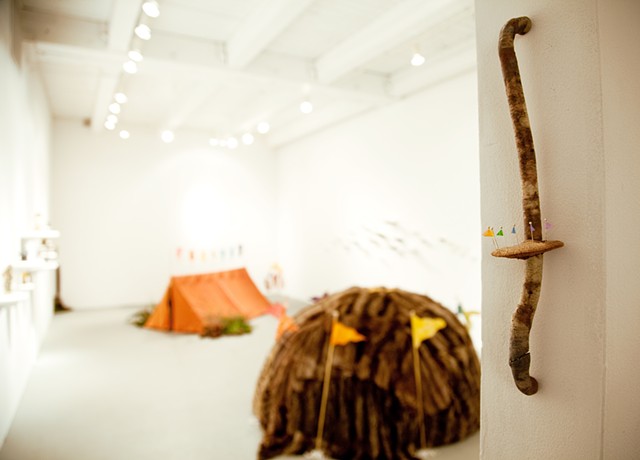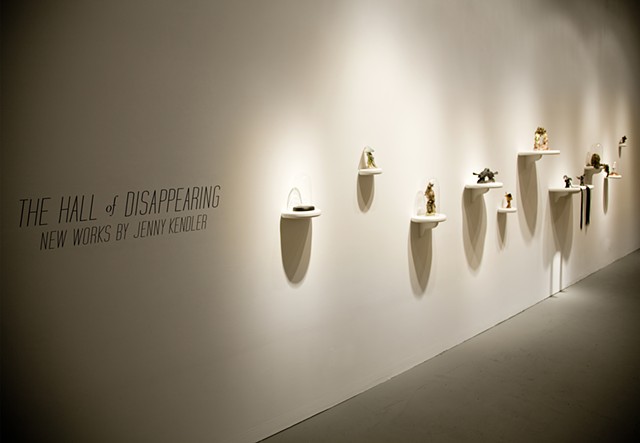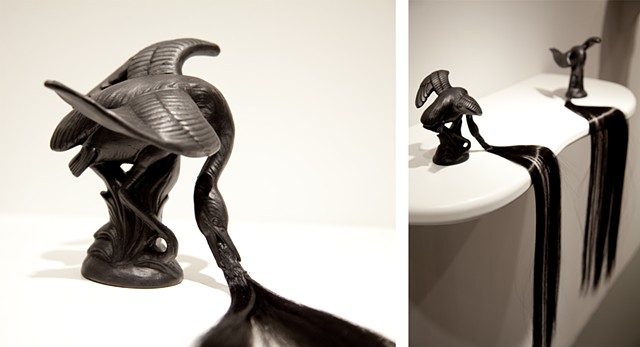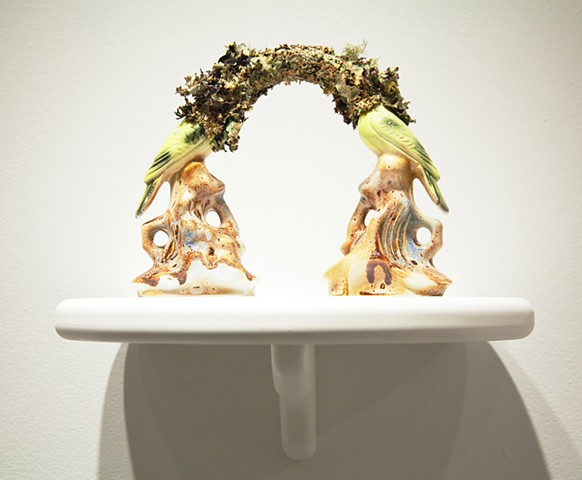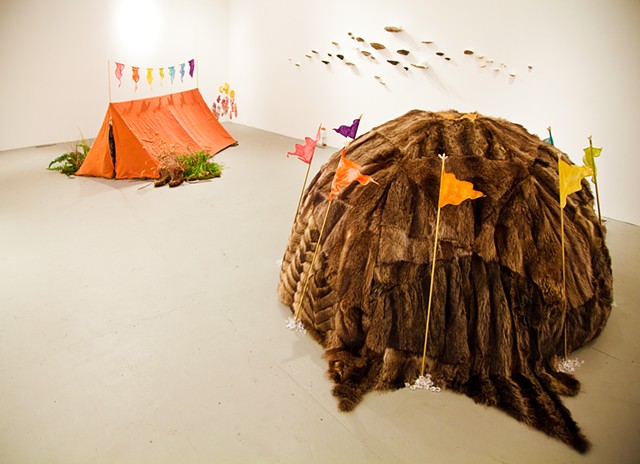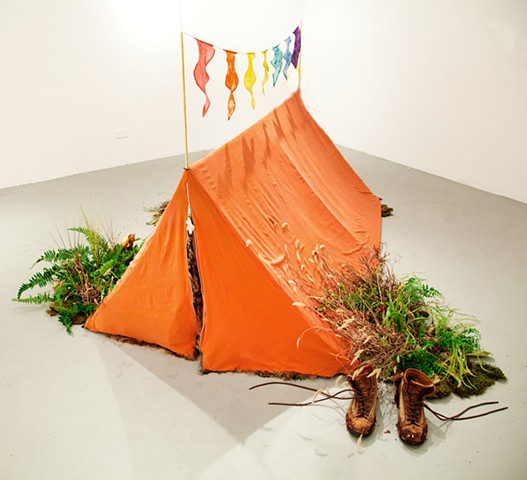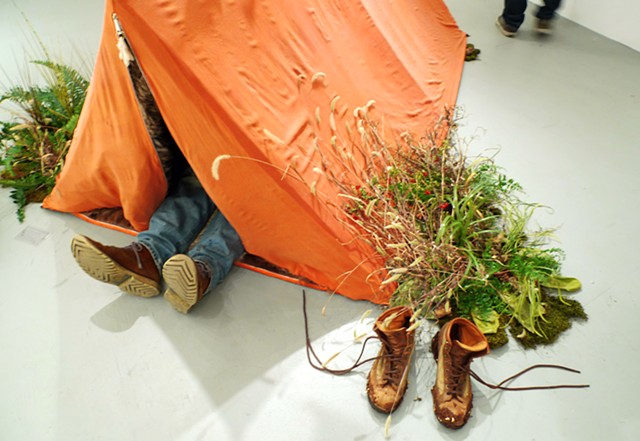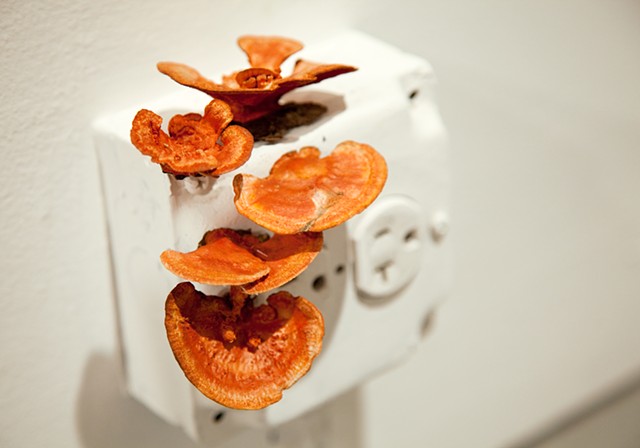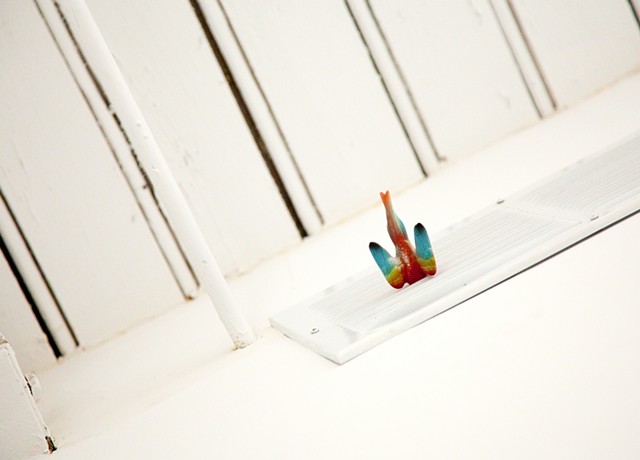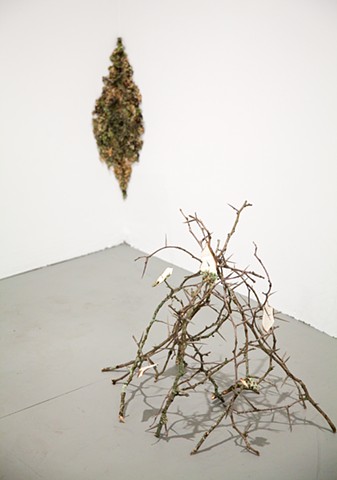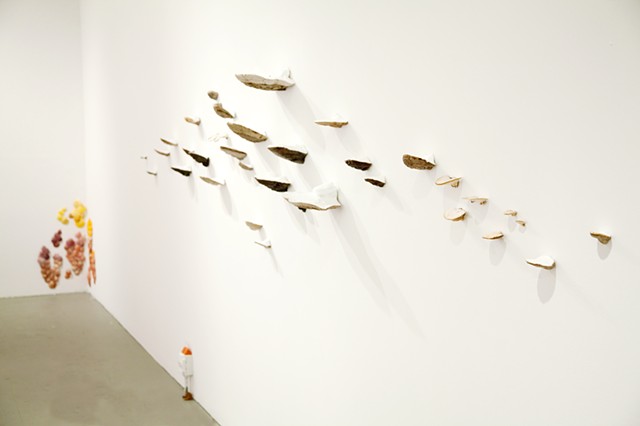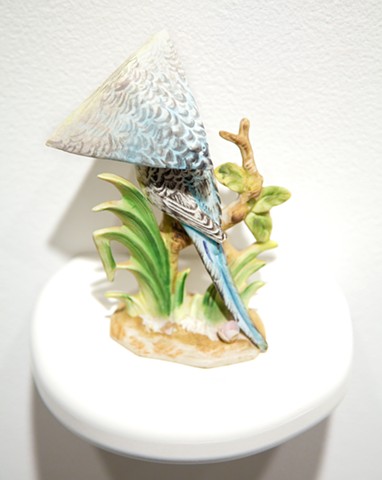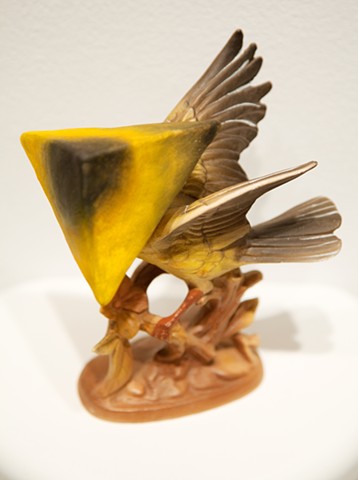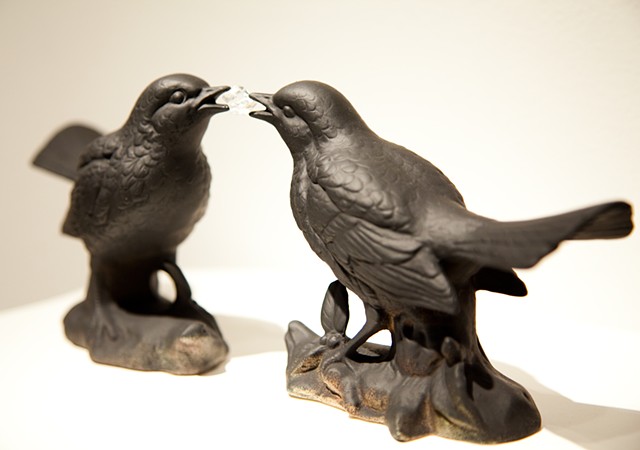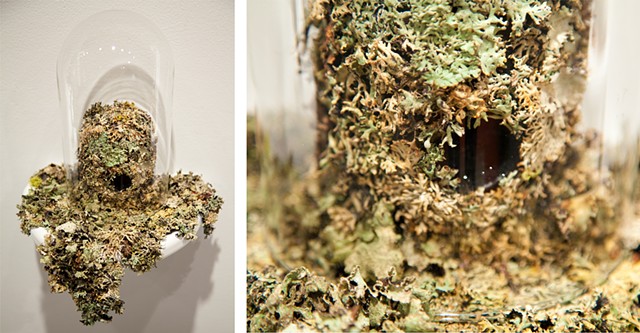The Hall of Disappearing at the Chicago Artists' Coalition
| Oct 2012 |
The Hall of Disappearing was a solo exhibition of new work at the BOLT Residency Gallery at the CAC, which was the culmination of a year-long studio residency.
The Hall of Disappearing was named one of Chicago's top 5 shows of the year by Hyperallergic, and one of the top two by ArtSlant — and was reviewed in the Chicago Reader and Hyperallergic.
Art critic Jason Foumberg wrote this wonderful piece for the show's catalog.
Please see the Projects and Sculpture section for more images and information on individual works from The Hall of Disappearing.
EXCERPTED FROM THE PRESS RELEASE: Referencing wunderkammers and museum displays, many pieces are placed under bell jars like specimens or relics. Wall-mounted works are displayed on shelf-fungus or on wooden shelves made to mimic shelf-fungus. Rather than present a dichotomy, Kendler seeks to complicate this relationship between Nature and Culture, using both “real” and “fake” materials in many works -- for example recycled raccoon fur with faux fur, or wild-harvested moss with plastic moss. Themes of mimicry, doubling and camouflage continue throughout the show.
The works range in scale, from delicate porcelain birds overgrown with lichen, to a furred hill entitled Burial Mound. The careful viewer may also notice some surprises hidden throughout the space, suggesting the subjective nature of our experiences.
Behind Burial Mound is a work titled Therianthropy -- a word meaning the metamorphosis of a human into another type of animal. Informed by Kendler’s research into the nature of animal (primordial) consciousness, the piece initially appears to be an iconic camping tent, complete with mud-caked boots sitting at the entryway. Upon coming closer, we realize the muddy boots are flecked with gold-leaf, suggesting an approach through holy ground. The tent itself has been reconstructed from hand-dyed orange silk, and its interior is lined with thick fur.
Viewers are invited to enter this second-skin or stomach of an animal, and are invited remove their clothes once zipped-up inside, in the dark, where they can have their own experience of the work.
Kendler is interested in de-and-re-constructing our clichéd abstractions of nature in order to reclaim something that belongs to us all. The Hall of Disappearing attempts to create for us a visceral, bodily experience, seeking to reinvigorate our participation in the natural world...and re-sensitize us to it’s wonders.
